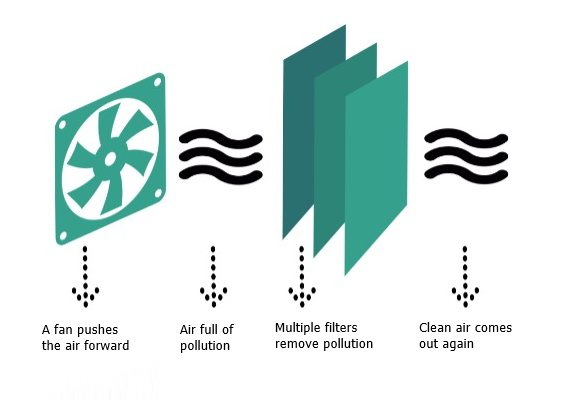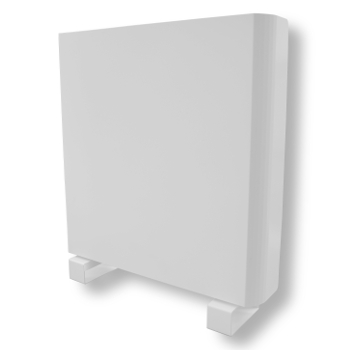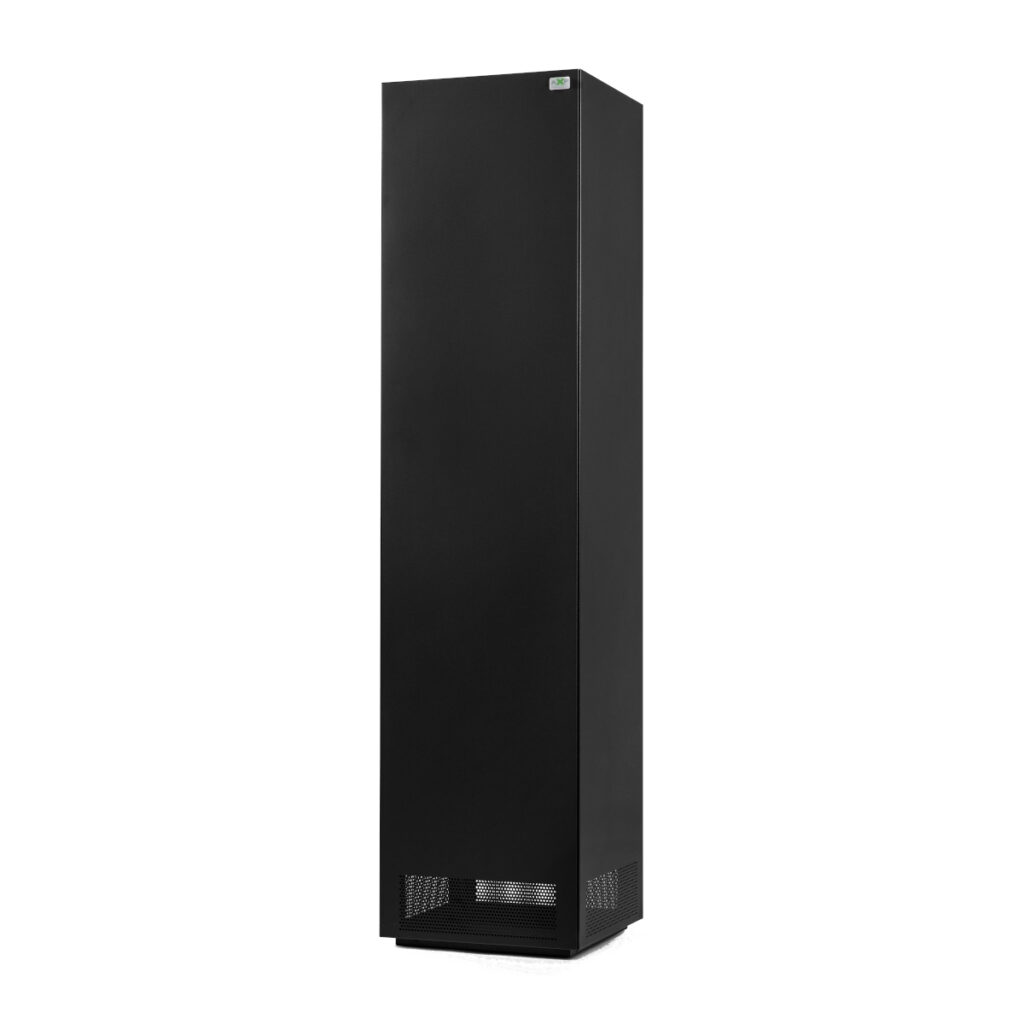We care about clean air
solutions for indoor air quality
Quick to: advice and product
Energy-efficient air purifier, save energy consumption
Energy consumption is the talk of the day. An energy-efficient air purifier is then an ideal solution. With current energy prices, you naturally want to avoid having to choose between clean air and an affordable bill. By opting for an air purifier that is energy-efficient, this succeeds. Still, many people wonder why some air purifiers are more economical than others. We will address that in this blog. We also discuss the different techniques that affect the energy consumption of an air purifier.
How does an energy-efficient air purifier work?
Most air purifiers work thanks to fine-mesh filters and fans. The fan pushes the air through the filter. Here, all kinds of pollutants are then left behind and cleaner air comes out again. As the device blows the air away, a negative pressure is created and new air flows in again. This process costs energy. Especially as the device pushes the air through the filter with some force, energy costs rise. Moreover, a trade-off between effectiveness and economy arises. After all, the finer the filters are, the more pollution they remove from the air. An energy-efficient air purifier should then obviously still be effective. At the same time, it then also takes more power to push the air through it. This increases the energy consumption of the air purifier.

Impact capacity on energy consumption air purifier
The first factor affecting the energy-efficient air purifier is, of course, its capacity. The larger the capacity is the more energy the device requires. This then mainly has to do with the larger fan needed. So if you want an energy-efficient air purifier, it is important not to put a device with a capacity for 300m2 in a small bedroom. Yet having as little capacity as possible is not always the best option either, as air purifiers are more efficient with excess capacity. After all, a device with a larger capacity than needed does not need to run at the highest setting. This makes them more economical for a given space than a smaller device that has to try very hard. Sound is also important here.
Does an AIH filter make an air purifier energy efficient?
Another method of making an energy-efficient air purifier is by using an AIH filter. AIH stands for “Active Ion HEPA“. This means that the filter uses ionisation, but before it. By giving the filter an electrical charge, it holds dirt a lot easier. This makes it possible to still be more effective at cleaning the air with fewer fine filters. Of course, this has advantages in terms of power consumption. With larger holes, the air flies through a lot easier. This saves a lot of energy. But thanks to the electrical charge, it still removes as much, or even more, air pollution.
How much will an energy-efficient air purifier save me?
All these energy-saving methods save quite a lot. For mid-range air purifiers that don’t pay much attention to their energy consumption, a consumption of 80W is quite normal. The larger lavish devices consume as much as 300W. This is in contrast to smaller, energy-efficient air purifiers that sometimes consume less than 10W (!) at their lowest setting. Since air purifiers are most effective when they are constantly on, this runs into hefty bills. With current electricity prices, a 10W device saves €600 a year compared to an 80W device. So energy savings with an air purifier will pay off handsomely.
Are ionisers economical?
Nowadays, there are also manufacturers offering air purifiers that only work with ionisation. These devices create an electric field that creates ions. These are charged particles that break down viruses and bacteria in the air. They also make particulate matter particles stick together, as it were. This increases the weight of the particles and they eventually fall down to the ground. This method eliminates the need for a rotating fan, the thinking goes. This would then reduce power consumption. An energy-efficient air purifier might then no longer need filters at all.
Yet there are considerable drawbacks to this. First, the effectiveness is less. Because the device does not create an airflow, the range is less and it takes a lot longer before the room is “cleaned”. It is also not an effective solution against most air pollution. Although fine dust does indeed sink to the ground over time due to ionisation, this is not a long-term solution. Eventually, the particulate matter particles break loose again and start floating into the air again. US research has therefore shown that ionisers by themselves have no impact on air quality. As a result, you keep a higher concentration of fine dust in the room. Still, the biggest drawback is the production of ozone. Thanks to ionisation, ozone is released. This is a harmful gas that is bad for human lungs. Therefore, use ionisation in combination with an air cleaner and ask what the manufacturer does to prevent ozone. By applying ionisation before the filter, you prevent ozone. So an energy-efficient air purifier that does work with filters is the perfect choice.
What should you pay attention to??
- Choose enough capacity and overcapacity
- An air purifier with AIH filter is more economical
- Ionisers have advantages and disadvantages
- Too much capacity is a waste.
- Choosing an economical air cleaner will save you hundreds of euros a year.

So what is an energy efficient air purifier?
Perhaps the most energy-efficient air purifier is the EA30. With consumption starting at 4W and not exceeding 20W even in the extreme, it is incredibly energy efficient. This device is suitable for rooms up to 60m2. For most bedrooms and living rooms, it therefore has enough excess capacity to do its job energy-efficiently. It works with the unique AIH technology, which makes it more effective as well as more economical. This also makes it very quiet. Furthermore, it comes with ionisation technology before the filter. This gives you all the benefits of ionisation, breaking down viruses and bacteria for example, without the risk of ozone. This is because the filter captures any ions that are released. In this way, the ions do not come into contact with the air and have no chance of forming ozone. So you keep your air clean and your power consumption low.
Need advice or more information?
Also check our product page with all air purifiers or read more about the air purifier in our extensive advice. Do you have further questions or would you like a no-obligation consultation? Call +31 20 646 4028. Or go directly to our range of air purifiers:







